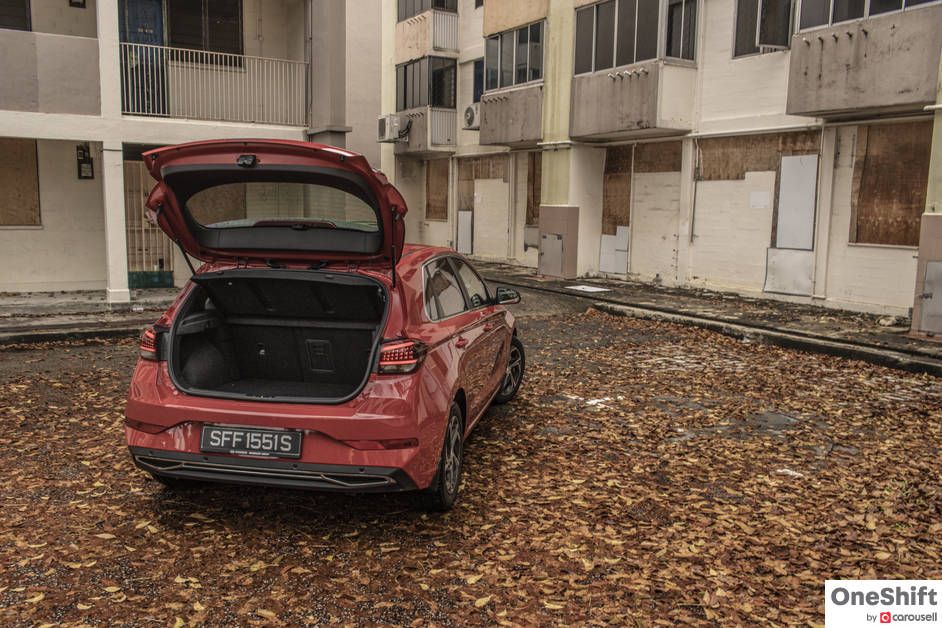Playing On A Lower-Key
Recently, Singapore’s Hyundai dealership here had decided to axe the 1.4 litre turbocharged variant of their hatchback, that mechanically aped the Mk6 and Mk7 Volkswagen Golf in many ways, in favour of a smaller, “more frugal” 1.0. But in this case, is less actually more?


It is no secret that when Hyundai first fielded the i30, they were making the attempt to enter the European market. While in Europe, the i30 sits among other i-badged cars, like the i10 and i20. Over here, Hyundai’s model nomenclature does seem to be a little confusing, since vehicles with actual names, like the Avante (which also is the subject of confusion, since Hyundai seems to flip a coin when naming this one) and the Accent, sit alongside the i30.

Recently, Singapore’s Hyundai dealership here had decided to axe the 1.4 litre turbocharged variant of their hatchback, that mechanically aped the Mk6 and Mk7 Volkswagen Golf in many ways, in favour of a smaller, “more frugal” 1.0. But in this case, is less actually more?

Smaller engine aside, there have been some small styling tweaks made to the i30. There are slimmer headlights sporting the brand’s new signature V-shaped LED DRLs, and a new grille. The rear-end is also fitted with V-shaped tail lights, mirroring the car’s frontal styling.

The 1.0 also gets a slightly updated interior, with a new semi-digital instrument cluster, and an infotainment system that offers mobile connectivity via Android Auto and Apple CarPlay. There is also a wireless mobile charger to keep your device juiced up.

Overall, the i30’s interior is well put-together, but while it is aimed at the likes of the VW Golf, the interior quality is closer to that of a French car, sans the bad fitting panels.

The Hyundai i30 accommodates well for a compact hatchback, and the generous boot swallows 395 litres (the recently launched VW Golf Mk8 is 381 litres). Fold the 40:60 rear seats, and the i30 is willing to swallow up to 1,301 litres.

The decision for Hyundai here to switch to a smaller engine, was because the 1.4 litre crossed into more costly Category B COE territory, making it a little harder to justify. The 1.0 SmartStream turbocharged three-cylinder gasoline direct injection engine that sits in this i30, produces a modest 118bhp, and 200Nm, though it retains its 7-speed DCT.

What you may not realise, is that with the 1.0, the rear suspension has also been swapped out for a simpler torsion beam setup.
My driving experience with the lower-powered i30 is mixed. For one, I often have a beef with three-cylinder engines, as their delivery is inherently rougher than their four-cylinder counterparts, and if you are fussy about refinement, you might not appreciate the i30’s raspy engine note. That said, the compact hatchback’s overall insulation is pretty good, and for a dual-clutch transmission, their 7-speed is arguably smoother than quite a few others out there.

If you are one who is often not in a hurry, the 1.0 delivers acceptable performance. Off the line, the smaller-engined i30 takes a while before full-on torque kicks in, and it does not like being worked. If you are thinking of overtaking, the transmission does kick down willingly, though it does not take much for the car you are overtaking to close the door on you.

Where the Hyundai hatchback shines is when you bring it up to speed, where it rides comfortably on those 205/55R16 tyres. The earlier-mentioned rear torsion suspension does act up when going over uneven surfaces, but overall, the i30 delivers a refined drive.
Hyundai’s claim of 18.9 km/l is quite far from the 13.1km/l that I achieved, partially due to me being unforgivably heavy-footed with their car. I would believe that the average driver would attain a figure closer to 16km/l.

With the facelift, Hyundai has added a suite of driver assistance systems, termed ‘Hyundai SmartSense’. This includes Lane Following Assist, Blind Spot Collision-avoidance Assist and Rear Cross-traffic Collision-avoidance Assist; the last-mentioned feature acts as a secondary set of eyes for you while reversing, warning you of oncoming traffic, and even applying the brakes if necessary.
The revised Hyundai i30 gives you more in terms of safety equipment than when it was originally introduced with the 1.4 litre engine. If you are one who likes an entertaining drive, the 1.0 litre engine might not be one to satisfy your needs. But if you are someone who appreciates the car’s suite of safety features and European build quality, the 1.0 litre i30 is worth looking at.

In Europe, the same 1.0 is offered with a mild-hybrid system, which we feel would have been an ideal pairing, since it would have filled in the gaps of what the engine here seems to be lacking.
Credits: Words and Photos by Clifford Chow







- Convenient and Hassle-Free
- Consumer Protection
Transparent Process
With No Obligation


Get the Best Price for your used car
from 500+ dealers in 24 hours








